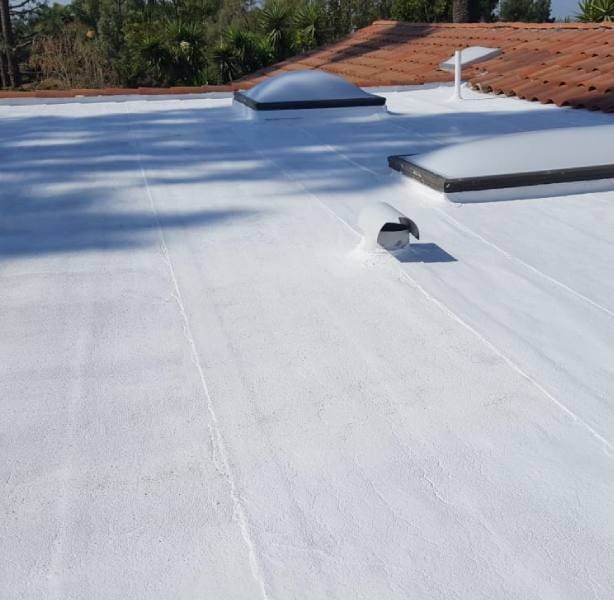How Long Should A Roof Last In Seattle?
Introduction
When it comes to homeownership in Seattle, one of the most pressing concerns is maintaining a sturdy roof over your head. The Pacific Northwest is known for its unique climate, which can significantly impact the lifespan of roofing materials. If you're pondering, "How long should a roof last in Seattle?", you're not alone. Many homeowners grapple with this question, especially given the region's weather patterns that include frequent rain and occasional snow.
A well-constructed roof can not only enhance your home's curb appeal but can also protect your family and belongings from the elements. In this article, we will delve deep into various factors that influence the lifespan of roofs in Seattle, explore different roofing materials, and answer some common questions regarding roof maintenance and longevity.
How Long Should A Roof Last In Seattle?
The lifespan of a roof in Seattle typically ranges between 20 to 50 years, depending on several factors including material type, installation quality, and environmental conditions. Here’s a breakdown:
1. Roofing Materials and Their Lifespans
Different roofing materials have varying lifespans:
- Asphalt Shingles: Generally last 20-25 years.
- Wood Shake: Can last 30 years if properly maintained.
- Metal Roofing: Often lasts 40-70 years.
- Tile Roofing: Can endure up to 50 years or more.
2. Installation Quality Matters
Even the best materials won't perform well if not installed correctly. Hiring a reputable Seattle roofing company ensures that your roof is installed according to local building codes and best practices.
3. Climate Considerations
Seattle's damp climate can lead to issues like moss growth and wood rot, which may shorten the lifespan of certain roofing materials. Regular maintenance is crucial to mitigate these risks.
Understanding Roof Lifespan Factors
1. Weather Patterns in Seattle
Seattle experiences significant rainfall throughout the year, which can contribute to leaks and deterioration over time.
Rainfall Impact
Heavy rains can lead to water pooling on roofs that aren't properly sloped or drained.
2. Temperature Fluctuations
While winters are mild compared to other regions, temperature fluctuations can still affect roofing materials.
Freezing and Thawing Cycles
These cycles can cause shingles to crack or warp over time.
3. Moss Growth on Roofs
Moss thrives in wet environments like Seattle, posing a risk to roofs made from asphalt or wood.
Preventative Measures
Regular cleaning and treatments specifically designed for moss prevention can help extend the life of your roof.
Choosing the Right Roofing Material for Your Home
1. Asphalt Shingles: Pros and Cons
Asphalt shingles are one of the most common roofing materials used in Seattle due to their affordability.
Advantages
- Cost-effective
- Easy installation
Disadvantages
- Shorter lifespan compared to other materials
2. Metal Roofing: A Durable Option
Metal roofs have gained popularity due to their longevity and resistance against harsh weather.
Advantages
- Extremely durable
- Fire-resistant
Disadvantages
- Higher upfront costs
3. Wood Shake Roofing: Aesthetic Appeal vs Longevity
Wood shake roofs offer a rustic look but require more maintenance than other materials.
Advantages
- Natural aesthetic appeal
Disadvantages
- Susceptible to rot if not maintained
Signs It’s Time for a New Roof
No homeowner wants to face an unexpected roof replacement; however, there are signs indicating it may be necessary:
1. Missing Shingles or Tiles
If you notice missing shingles after a affordable Seattle roofing storm, it may be time for repairs or even a full replacement.
2. Water Stains Inside Your Home
Water stains on ceilings or walls often indicate leaks that need urgent attention.
3. Granules in Gutters
Finding granules from asphalt shingles in your gutters suggests deterioration of your roof surface.
Maintaining Your Roof for Longevity
To maximize your roof's lifespan, regular maintenance is essential:

1. Regular Inspections by Professionals
Hiring a reliable Seattle roofing company for annual inspections helps identify problems before they escalate.
2. Cleaning Debris off Your Roof
Removing leaves and debris prevents moss growth and water pooling which can damage shingles over time.
FAQs About Roof Lifespan in Seattle
FAQ 1: How often should I inspect my roof?
It’s advisable to inspect your roof at least once a year or after severe weather events.
FAQ 2: Do I need permits for roof replacement?
Yes, replacing your roof typically requires permits from local authorities in Seattle.
FAQ 3: What are signs my roof needs replacing?
Common signs include curling shingles, leaks inside your home, or visible wear such as rust on metal roofs.
FAQ 4: Can I install new shingles over old ones?
While possible under certain circumstances, it's generally better practice to remove old shingles before installing new ones for optimal performance.

FAQ 5: How do I choose a reliable roofing contractor?
Look for reviews online, ask for references from previous clients, and ensure they’re licensed and insured.
FAQ 6: Is metal roofing worth the investment?
Yes! Though initially pricier than asphalt shingles, metal roofs often last much longer with lower maintenance costs over time.

Conclusion
In summary, understanding how long a roof should last in Seattle encompasses several factors ranging from material choice to local weather conditions and maintenance practices. By investing time into regular inspections and employing professional services from reputable Seattle roofing companies, you can ensure that your home remains well-protected against the elements for many years to come. Remember—an ounce of prevention is worth a pound of cure when it comes to safeguarding one of your most significant investments!